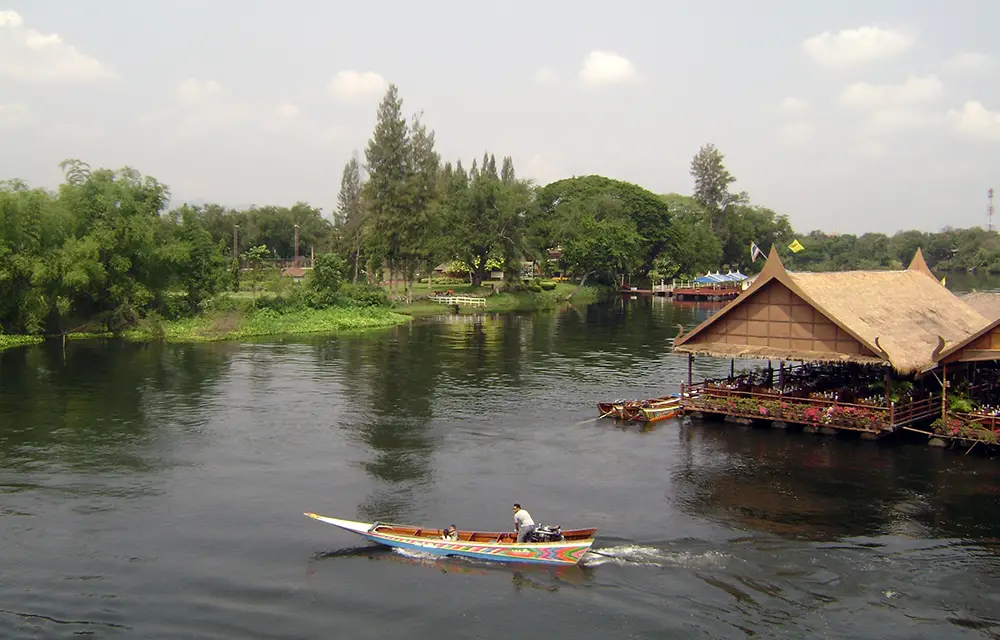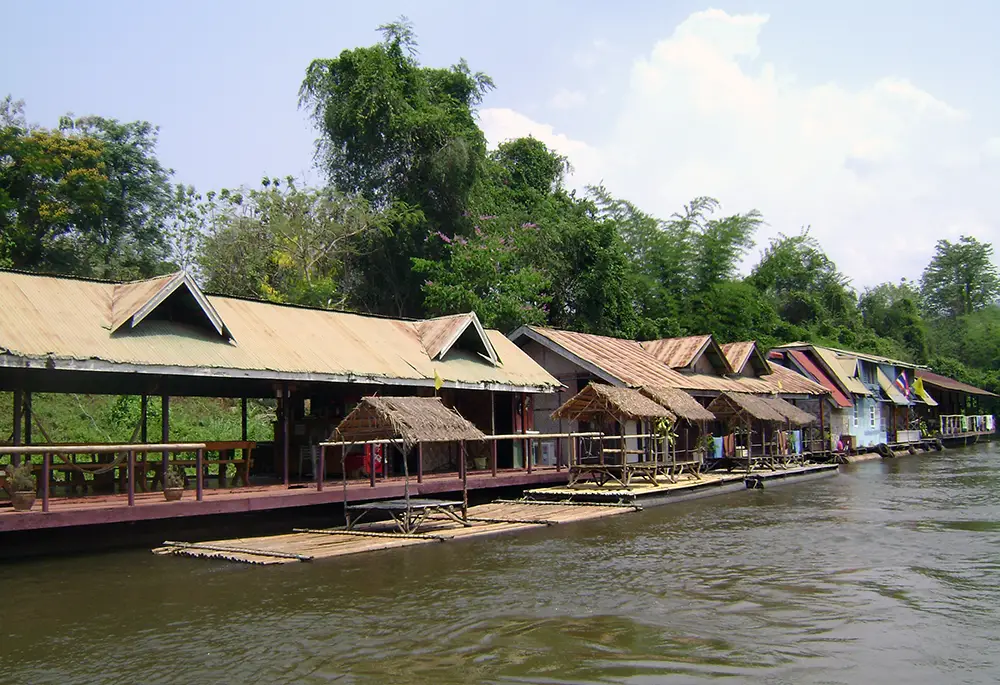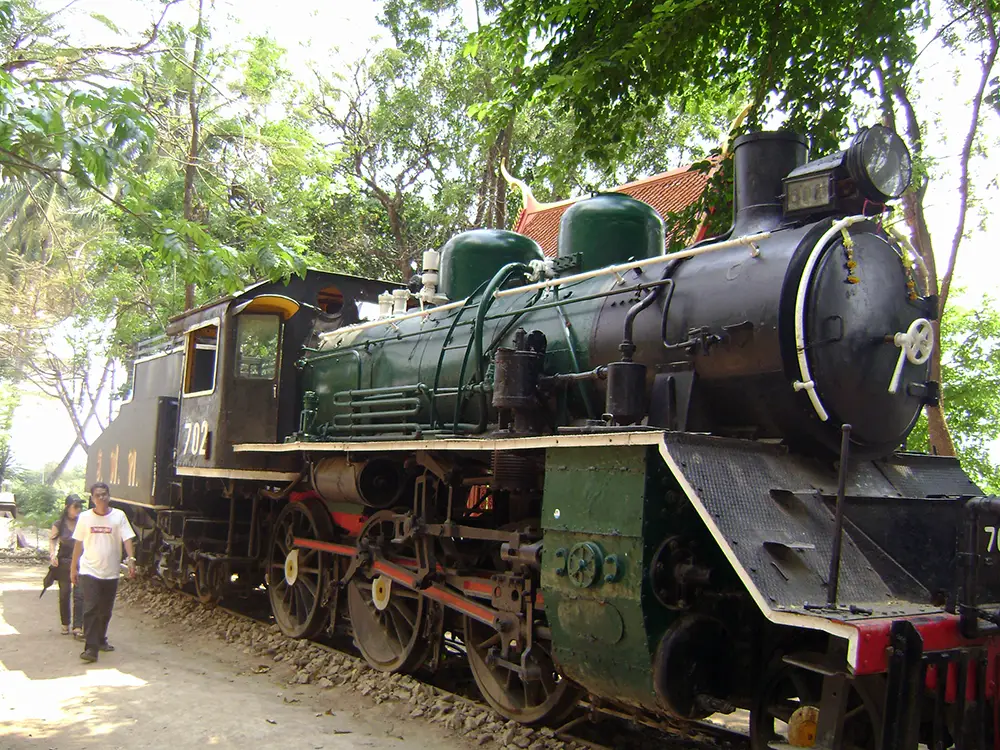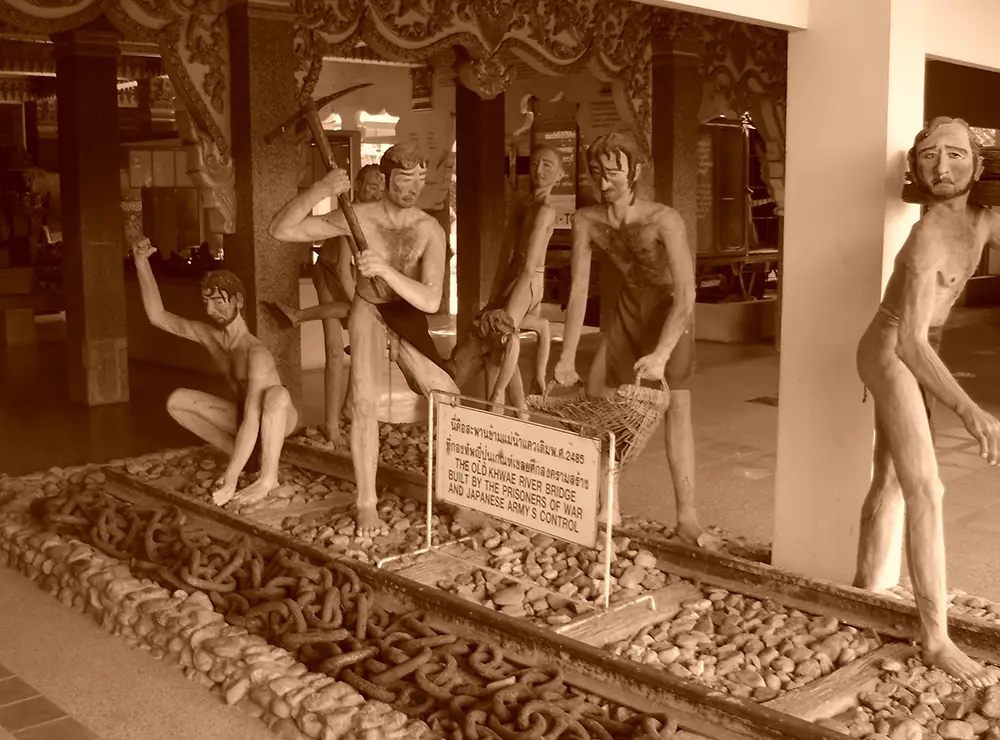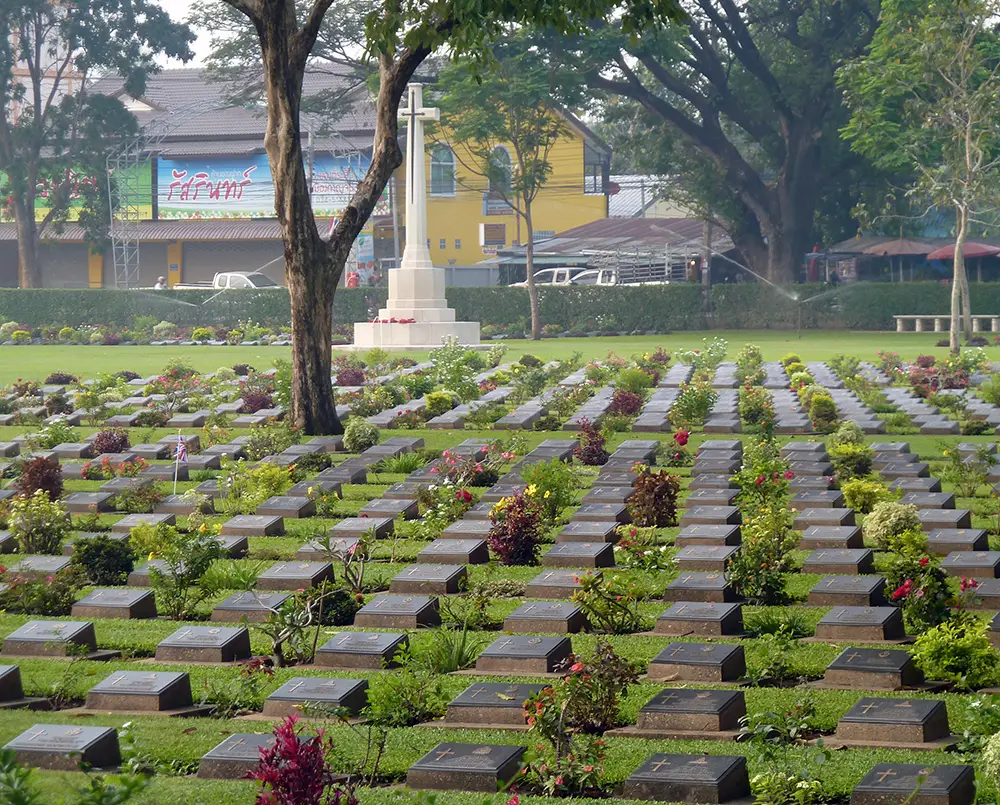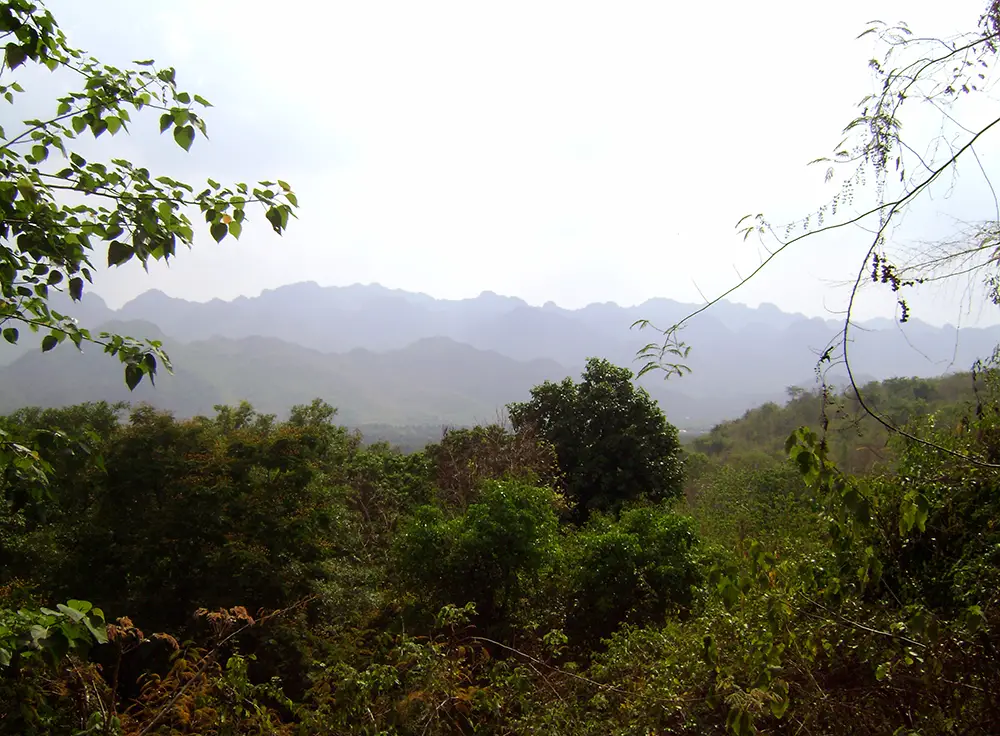The international press is still running stories, analyses, and commentaries of the tragedy that happened at the Tiger Temple in Kanchanburi where rampant irregularities and cruelties towards animals were recently uncovered. Once a major attraction, Wat Pha Luang Ta Bua, the “tiger sanctuary,” is now closed and an investigation is taking place, but this should not deter travellers from choosing Kanchanaburi Province as their next destination.
On the contrary, Kanchanaburi is one of those provinces in Thailand that has so much to offer, ranging from culture to history, from flora to fauna, from nature to entertainment, from traditional to modern. We could easily come up with a list of 100 things to do and see in Kanchanburi! But on your next weekend trip to Kanchanburi Province, we recommend (re)visiting the province’s five of the major attractions.
The five of the major attractions Kanchnaburi has to offer are the river, the bridge, the museum, the cemetery, and the park.
Located on the border with Myanmar at about 130 km west of Bangkok, Kanchanaburi Province’s most striking natural features are the mountainous forests and the rivers that cross it. Featured in many films, documentaries, novels, and studies, Kanchanburi is most prominently remembered for the role it had to play during the Japanese occupation of Thailand in the Second World War.
1. The River in Kanchanaburi
The famous river mentioned in the novel and the movie The Bridge on the River Kwai is actually Mae Klong, and not the Kwai River which received its name only later due to the immense popularity of movie. So, the upper stretch of Mae Klong coming down to the town of Kanchanburi was renamed Khwae Yai (literally, “big tributary” in Thai) to accommodate a growing interest which fueled a massive tourist industry.
Apart from taking photos of this pseudo-historical river you can actually spend the night on it. The internet is full of offers of floating hotels and river-side resorts which can provide an amazing experience. You can also choose to go rafting, kayaking, canoeing, and even swimming, plus enjoy a riverside dinner.
2. The Bridge in Kanchanaburi
The main attraction of the province is by far the “Bridge over the River Kwai” which is mostly a reconstruction of the original one which the Allies bombarded frequently during the war. Although the rail tracks are still operational and there’s a train crossing the river on a daily basis, the center of the track has been transformed into a steel-plated walkway.
The bridge can get quite busy especially on weekend evenings when tourists and locals come to the river to watch and take photographs of the sunset, so you might want to arrive at the bridge late in the afternoon. If you’re lucky enough to experience the train crossing the bridge, you can safely step off onto the bridge’s side platforms while the train trudges away on the one-way track.
3. The Museum in Kanchanaburi
Having such a rich history, Kanchanburi Province is the home to several excellent museums, including Thailand-Burma Railway Center and JEATH War Museum. But the closest one to the bridge is the World War II & JEATH War Museum, located at only 50 meters from bridge.
While there’s a mixture of everything displayed here, from shrines to statues to dusty exhibits, the museum gives the curious traveller enough areas to explore. After you’re done exploring the 4-story building of the museum, don’t miss the basement which in fact was one of the original JEATH museums. Entry is only 40 baht and the operational hours are between 8:30am and 6:00pm.
4. The Cemetery in Kanchanaburi
To pay tribute to the tens of thousands of POWs who died during the construction of the Death Railway to Burma, the Commonwealth War Graves Commission (under the patronage of Prince Edward, the Duke of Kent) maintains the two war cemeteries from Kanchanburi.
Chongkai War Cemetery and Kanchanburi War Cemetery are the final resting places of over 7,000 prisoners of war who died building the railway. While both cemeteries are worth paying a visit, Kanchanburi War Cemetery is more easily accessible as it is situated opposite the main railway station. The cemeteries are impeccably kept and the admission is free. Kanchanburi War Cemetery is only open from 7am to 2pm and contains the graves of British, Dutch, and Australian POWs. Chongkai War Cemetery is always open and is the final resting place of British and Dutch soldiers only.
5. The Park in Kanchanaburi
One of the most beautiful national parks in Thailand is Erawan National Park which is located in the Tenasserim Range, a mountain chain that forms a natural boundary between Thailand and Myanmar. The park’s fame is undoubtedly due to Erawan Falls, a seven-tiered waterfall that allegedly resembles a three-headed elephant known as “erawan” in Hindu mythology.
The park can get quite crowded during the peak season, so it’s advisable to plan in advance. The entry fee is 300 baht for foreigners (200 baht for children) while Thai nationals pay 100 baht and 50 baht respectively. The park stays open from 7am to 4:30pm.
If you travel from Bangkok, Kanchanburi province can be reached by bus from the Southern Bus Terminal, by train from Thonburi Train Station, by minivan from Victory Monument, or by private car following Phetkasem Road and then Highway 323. Alternatively, you can rent a taxi and pay 2,000 baht for the round trip.
